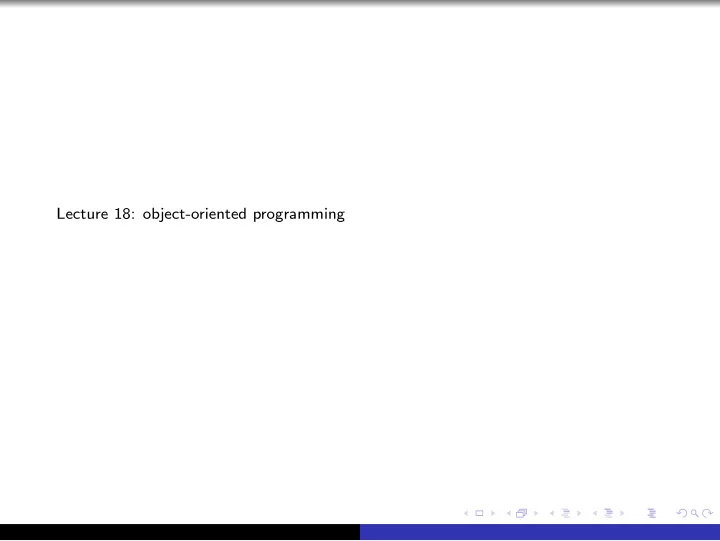

Lecture 18: object-oriented programming
Review of Object-Oriented Programming in Python The primary characteristics associated with object-oriented programming are inheritance; encapsulation; and polymorphism
Inheritance class Shape: class Rectangle(Shape): class Square(Rectangle):
Encapsulation class Shape: class Rectangle(Shape): def init (self, width, height): self. width = width self. height = height
Polymorphism class Shape: def area(self): pass class Rectangle(Shape): def area(self): return self. width ∗ self. height class Square(Rectangle): init (self, side): def super (). init (side, side) >>> shape = Rectangle(10,20) >>> shape.area() 200 >>> shape = Square(10) >>> shape.area() 100
Modelling Charts
A Chart class 1 class Chart: 2 3 def init (self, title): 4 self. title = title 5 6 def title(self): 7 return self. title 8 9 def str (self): 10 return ” {} ”. format (self. title)
A Histogram class 1 class Histogram(Chart): 2 3 def init (self, bins, title): 4 self. bins = bins 5 self. counts = [0] ∗ len (self. bins) 6 super (). init (title) 7 8 def index(self, bin ): 9 return self. bins.index( bin ) 10 11 def add to bin(self, bin , count): 12 self. counts[self. index( bin )] += count 13 14 def count(self, bin ): 15 return self. counts[self. index( bin )] 16 17 def str (self): 18 h = ” ”.join([” {} : {} ”. format (x,y) for (x,y) in zip (self. bins, self. counts)]) 19 return ”[ {} ] {} ”. format ( super (). str (), h) 20 21 @staticmethod 22 def percentage(count, total): 23 return count / total
Usage >>> h = Histogram(["Intro", "Data Structures", "Algorithms", "Operating Systems"], "CS Course Enrollments") >>> print(h) [CS Course Enrollments] Intro:0 Data Structures:0 Algorithms:0 Operating Systems:0 >>> h.add_to_bin("Intro", 10) >>> print(h) [CS Course Enrollments] Intro:10 Data Structures:0 Algorithms:0 Operating Systems:0 >>> h.count("Intro") 10 >>> h.add_to_bin("Operating Systems", 30) >>> print(h) [CS Course Enrollments] Intro:10 Data Structures:0 Algorithms:0 Operating Systems:30
Recommend
More recommend